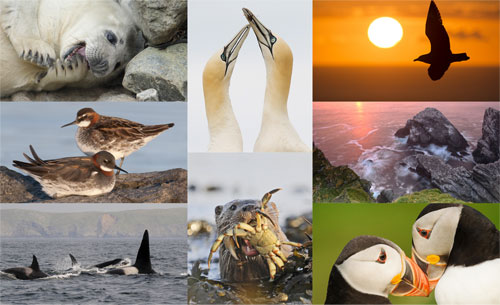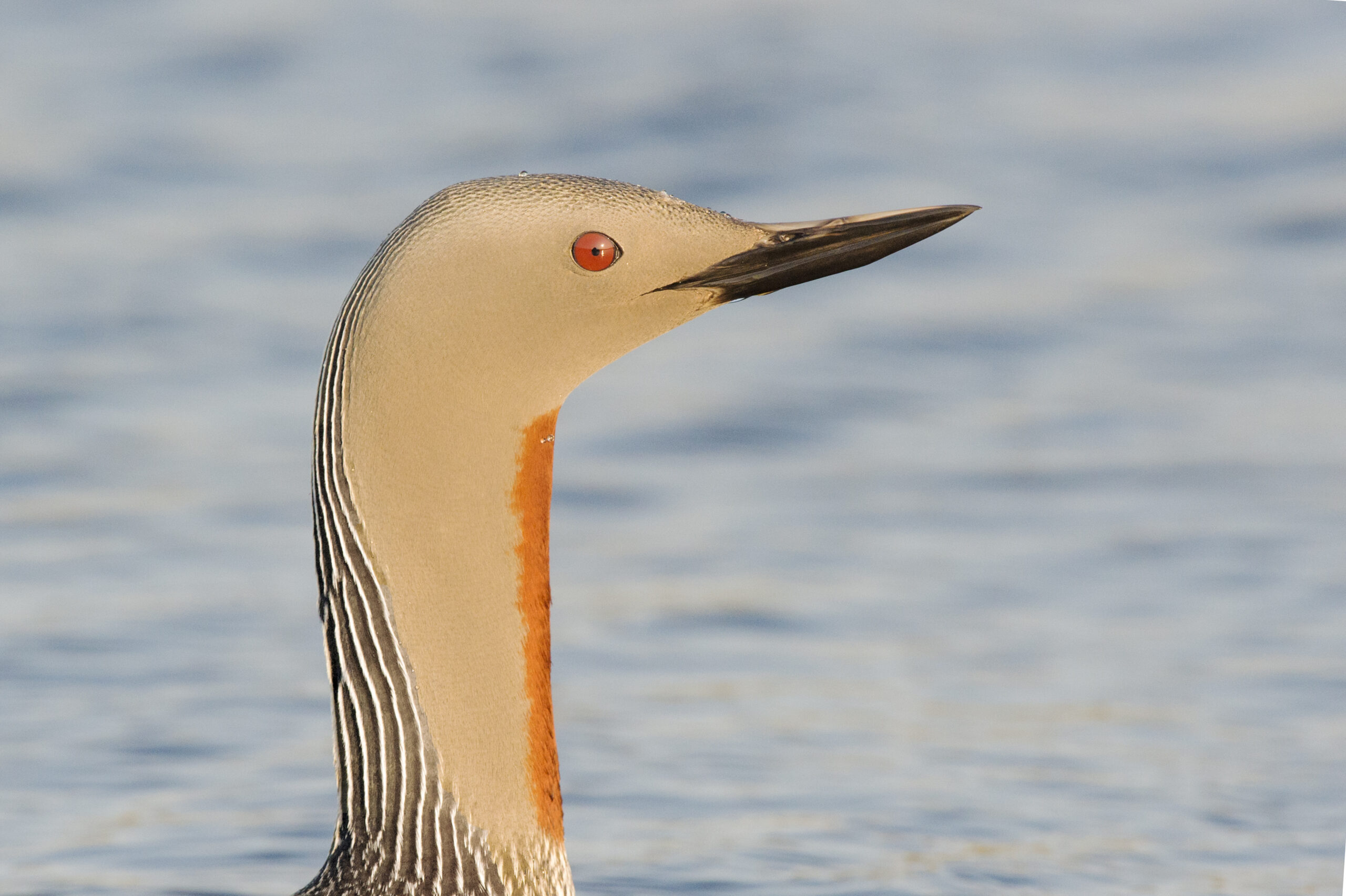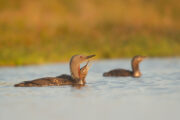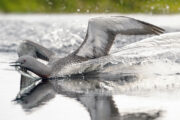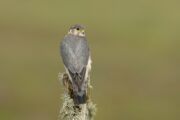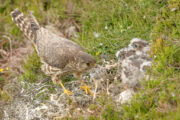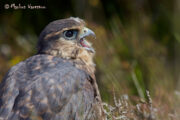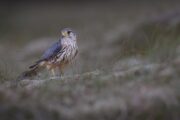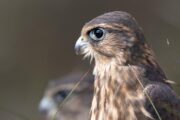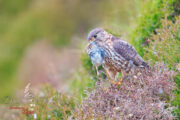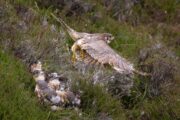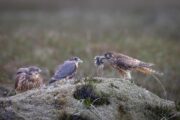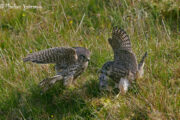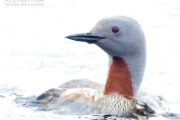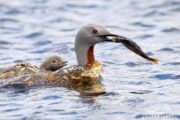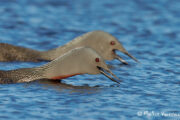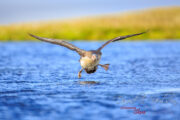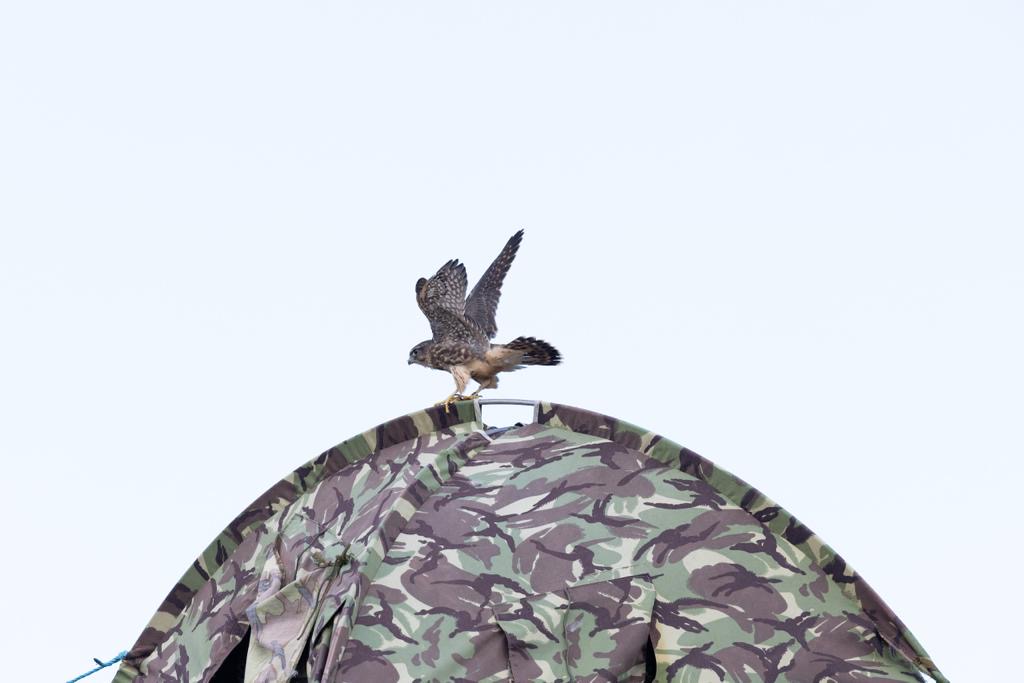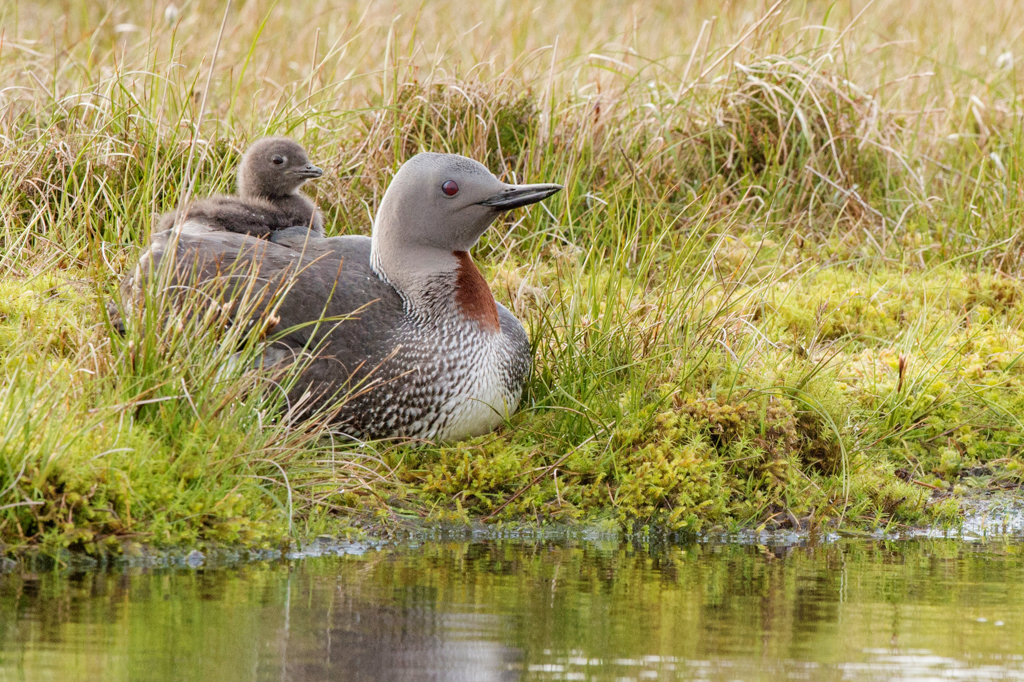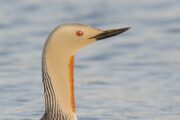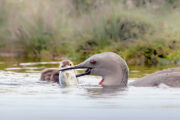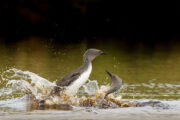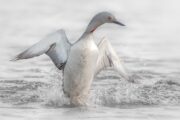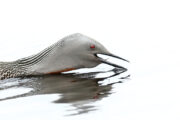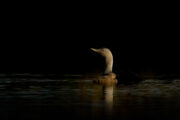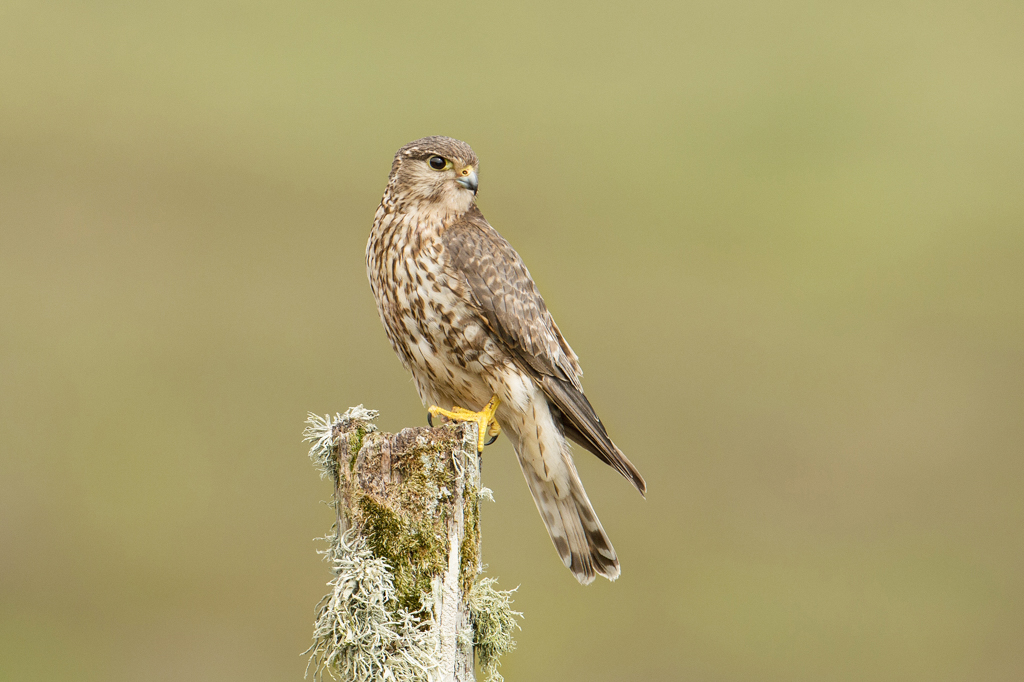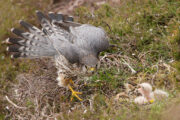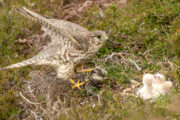Schedule 1 Species Assignments – Merlin & Red-Throated Diver
Focusing on two of Britain’s rarest breeding species, Merlin and Red-Throated Diver, this specialist assignment is carried out under a Schedule 1 license, authorised by NatureScot. Brydon has been working under this privileged license for almost 15 years. His knowledge of these species, ethics as a field naturalist and photographer, as well as his unparalleled hide work experience of these birds has built a trusted relationship with licensing board and local NatureScot team over many years.
Many weeks of fieldwork and careful monitoring go into these assignments before we ever even have a camera in a hide. Finding breeding pairs in the right locations begins in early May but hides are not introduced to the sites in the coming weeks. The hides are moved in stages over a period of two-three weeks to allow birds to accept them without disturbance. We do not work on the birds during incubation due to the increased sensitivity during that period.
The habitats chosen by these species takes us to some of the most remote parts of the islands which in itself is a big part of the experience, knowing that you may well be the only person in the country photographing that species on that day, and in a wilderness few ever see.
Client Images
Photos by Jo Cheetham, Conrad Dickinson, David Neilson, Markus Varesvuo (see blog post by Markus on one of his visits).
About the hide work
These assignments are led under strict instruction and guidance. Every stage is carried out with the utmost care and consideration to the birds. Being able to photograph and study these magnificent moorland icons is a huge privilege and we take our responsibility to do so very seriously.
To access the hides we must use the ‘walk-in’ method. We use an extra person to accompany us to the hide, and only once set up and ready to shoot in the hide, does that person leave. For both species this works really well. With the extra person leaving the hide, the birds are tricked into thinking the coast is clear for them to settle and behave as normal, allowing intimate behaviour to be captured.
For both species we usually have at least two locations established with hides in place. Due to the nature of these species, they tend to have a preference for wild and remote locations meaning that some sites may involve up to a mile’s walk across moorland, however we generally try where possible to use locations which involve the least amount of walking, often with access with 4×4 on rough hill tracks.
The optimum window
We do not work on these species during incubation, whilst still on eggs, due to increased sensitivity. Though the logistics of hide positioning has already begun, we only begin to work on them after hatching. The optimum window for both species in same itinerary generally spans from mid-June to mid-July. By this stage Merlin will have usually fledged, whilst divers take much longer. As with any species, there can be variation of the timing of breeding due to weather or prey availability, which can move this period by a week or more either direction. As Red-throated Diver take several weeks longer to fledge, our season working on them usually runs well into late summer.
This gives a much longer period to work on them, and the season is extended through August and even into early September. It is non-breeding birds that continue to visit the moorland lochans, many of which have already paired but have yet to establish their own territory. They may stay together for a season or two before claiming and settling to breed. These birds offer some truly spectacular photo opportunities, as multiple pairs practice their evocative displays and fight off challenges.
The license
Working under this license is a privilege we earned through Brydon’s reputation as a local naturalist with local conservation bodies, his experience of these species and his uncompromising ethics on these assignments. We take this responsibility very seriously and so minimise the number of assignments each season and take care to consider each applicant.
This assignment was introduced to our program a decade ago after several years of working alone under license to study, photograph and gain experience on these rare breeding birds before ever applying for the license to cover photographers under Brydon’s guidance.
We feel proud to have earned this privilege on merit, to work on these moorland icons – to our knowledge were the first (and sill, the only) company to be trusted with this responsibility in the UK.
The Assignments
We generally tend to run these two species assignments together in the same itinerary, and try to give two sessions with each species in the week. We usually have two locations for each species set up, which ensures we minimise visits to each site to 1-2 per week. They are also available as individual assignments. We usually take only one photographer per hide, however two may be possible for some hides, depending on location, hide etc.
The age-old and tried and tested method of ‘walk-in’ is used for every visit- in and out. To do this we have someone accompany us to the hide, leaving only once we are set up inside. This simple but effective tactic tricks the birds into thinking there is no one left, once accompanying person is out of sight and gone. When the shoot is over, the same person returns to assist our exit and accompany our departure.
Depending on logistics of location, each session is usually a minimum of 5-6 hours.
Activity can vary with both species. Some days there can be several visits, whilst others less. Weather can be a factor, or simply prey availability and for these reasons alone, we always recommend two sessions to maximise opportunities.
The species
These two species are very much birds of upland habitats, generally preferring Shetlands wildest and most remote expanses of moorland. Which can mean that some, but not all sites can mean 1-2 miles of a walk-in to the sites. Others are more accessible, using 4×4 across rough access tracks so involve minimal walking. Each assignment is therefore tailored, as best we can, for the ability of the photographer.
Red-throated Diver
Breeding exclusively on inland moorland lochans, divers feed primarily out on the sea. Only on a rare occasion are they seen on Shetland to catch prey on the largest lochs. They have a preference for small lochans, some barely 10-15m long. We are very selective of which pairs we work on. Some are very confiding, paying little or no attention to our visits, whilst others show much less tolerance- these are the pairs we avoid to avoid potential stress or disturbance. A wide range of images are possible. The combination of their beauty and appearance gives many opportunities, (in varying light) from portrait to technique whilst their foraging trips and return visits to feed chicks live prey can produce some very exciting and dramatic behavioural images, particularly when they hit the mirror calm water and the chicks meet to claim their catch.
Merlin
This species tends to favour more difficult terrain, nesting in heather (usually deep), with a preference for small sheltered valleys or hillsides. This is a much more static assignment. Not surprisingly for a bird of prey, any movement seen of the lens can unsettle them.
Often, we may set up a second hide, positioned at a perch the adults use to rest, preen and pluck prey, either on a raised mound or rocky outcrop they already use, or even a weathered and lichen covered old fencing post. Unlike the divers, work is much more static with Merlin’s. Movement of the lens must be much more controlled due to how acute their senses are to any movement.
The hides
For RTD we generally us purpose-built hides, (where logistically possible) which are deployed for the season. These offer a little more comfort and variation of shooting possibilities then the ‘pop-up’ hides we need to use on the hillsides of Merlin territories. For the latter we recently started a collaboration with Tragopan and so are delighted to offer a range of their thoughtfully and well-designed bird hides.
Supporting the study & work on these species
Brydon is a member of the local Raptor Study Group, helping to monitor breeding population and success of Merlin each year so all our data from these assignments, and other sites we monitor all contribute to the ongoing studies. Similarly with Divers, all data is passed on from the pairs we work on as well as the others we monitor.
We have also begun to contribute some financial support through a donation from each assignment which will be used towards ongoing studies and evolving new projects.




